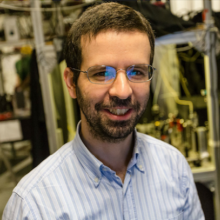Atomic-optical magnetometer has been one of the leading areas in quantum technology. In this type of magnetometer information about the magnetic field is mapped to the atomic spin state, which is prepared and monitored by light.
The main interest of our group is to exploit quantum resources such as squeezing and entanglement in order to enhance the capacity, sensitivity and speed in atomic-optical magnetometers. We aim at developing new methodological approaches and implement robust experimental procedures at the quantum interface between light and warm atomic ensembles in order to perform sensing at the ultimate limits of precision. We are also interested in practical applications of ultra-sensitive magnetometer, for instance in biomedicine or in security screening.
Currently, we are exploring two reseach directions:
- Spin noise spectroscopy in high density alkali atomic ensembles: Spin-noise spectroscopy contains useful information about the spin system, allowing for the study of atomic properties without externally perturbing the system. We use Faraday rotation of off-resonant light to passively detect the spin noise in an equilibrium ensemble of room-temperature paramagnetic alkali atoms experiencing a DC magnetic field. In the regime of high alkali density and low magnetical field, strong correlations between the hyperfine levels result in previously unnoticed features in the spin noise spectrum.
- Simultaneous reduction of all quantum noises in an atomic-optical magnetometer: In an atomic-optical magnetometer information about the magnetic field is mapped to the atomic spin state, which is then monitored by light. These magnetometers have reached a level of sensitivity limited by quantum effects. We can identify three noise sources originating from the quantum nature of light and atoms that could potentially limit the sensitivity of the magnetometer: photon shot noise, atom shot noise (also called spin projection noise) and the back-action noise. We aim to realize a magnetometer that will address for the first time all types of quantum noise that affect an atomic-optical magnetometer and demonstrate quantum advantage in the measurement. To this end, we will use stroboscopic modulation of the probe light synchronized with the atomic spin precession, resulting in atomic-spin squeezed and light-squeezed states.






